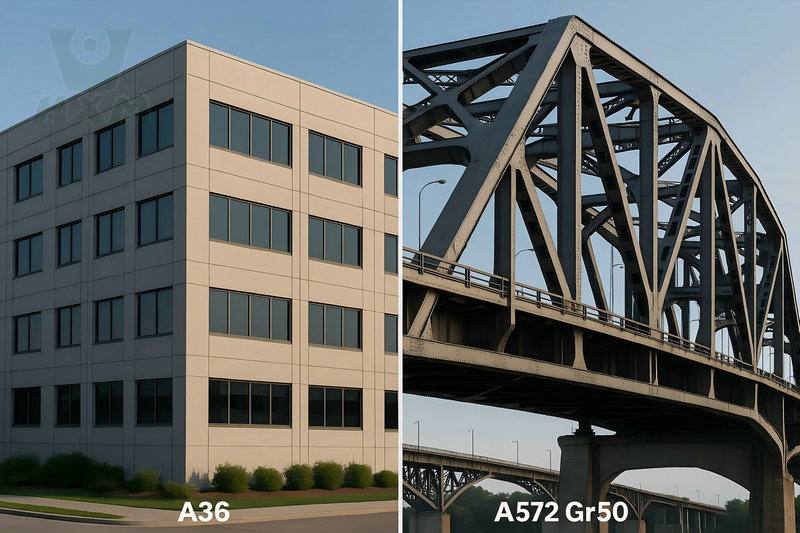First of all, it needs to be clear that steel plate is a very common material in many industries, such as construction, manufacturing, aerospace, and so on. They are used in a wide range of applications, including making steel structures, panels, car bodies, oil tanks, containers, and more. Whether you’re in construction, manufacturing, or another industry, you need to buy or use steel plates, and it’s important to know their weight.
Secondly, the weight of steel plates is directly related to their performance and use. If the weight of the steel plate exceeds expectations, it may cause inconvenience to the user process or even a safety hazard. Therefore, it is very necessary to calculate the weight of steel plates.
The Basic Concept of Steel Plate Weight
A. Steel Plate Density
Steel plate density refers to the mass of steel plate per unit volume. The density of the steel plate varies with the type of steel sheet, and the density of the general steel plate is about 7.85g/cm³. When calculating the weight of a steel plate, the density of the steel plate needs to be used.
B. Steel Plate Area
The area of the steel plate refers to the area covered by the surface of the steel sheet. When calculating the weight of the steel plate, it is necessary to measure the length and width of the steel plate, and then use the formula to calculate the area of the steel plate.
C. Steel Plate Thickness
D. Unit Conversion
When calculating the weight of a steel plate, dimensions such as length, width, and thickness need to be converted to the same unit for calculation. Common units include millimeters, centimeters, meters, inches, and feet, among others. When using the formula to calculate the weight of the steel plate, the same units must be used.
The above are the basic concepts needed to calculate the weight of steel plate. Next, we will introduce how to calculate the weight of the steel plate.
How to Calculate the Weight of Steel Plate?
A. Formula: Weight = Area x Density x Thickness
The formula for calculating the weight of a steel plate is Weight = Area x Density x Thickness. Among them, area, density, and thickness are all necessary parameters, which need to be obtained in actual measurement.
B. Example: How to use the formula to calculate the weight of a steel plate
Here is an example of calculating the weight of a steel plate:
Suppose we have a steel plate with a length of 2 meters, a width of 1 meter, and a thickness of 10 mm. The density of the steel plate was 7.85 g/cm3.
First, the area of the steel plate needs to be calculated, namely:
Area = Length x Width
= 2m x 1m
= 2 square meters
Then, substitute the above data into the formula for calculating the weight of the steel plate:
Weight = Area x Density x Thickness
= 2 square meters x 7.85 g/cm3 x 10 mm
= 1570 grams
= 1.57 kg
Therefore, the weight of this steel plate is 1.57 kg.
It should be noted that when using the above formula for calculation, it is necessary to ensure that all units are the same, such as: area must be in square meters, density must be in grams per cubic centimeter, and thickness must be in millimeters. If the units are different, a unit conversion is required.
Other Ways to Calculate the Weight of Steel Plate
A. Online Steel Plate Weight Calculator
Now, there are many websites that provide online steel plate weight calculators that can quickly and accurately calculate the weight of steel plates. Using these calculators, you only need to input the parameters such as the length, width and thickness of the steel plate to get the weight of the steel plate. In addition, some steel manufacturers also provide their own plate weight calculators, which may provide more accurate figures.
B. Steel Plate Weight Table
The steel plate weight table is a convenient method for calculating the steel plate weight, usually provided by steel manufacturers. These tables list the weight of steel plates of various specifications and materials, and the weight can be quickly found according to the specifications and materials of the steel plates. The method of using the steel plate weight table is straightforward and does not require any calculations, but it is necessary to ensure that the table used and the steel plate specification exactly match.
The above are other methods for calculating the weight of steel plates, among which the online steel plate weight calculator is more convenient and quick, and the steel plate weight table is more suitable for querying various steel plates of different specifications.
In Conclusion
In this article, we describe how to calculate the weight of a steel plate, as well as other methods for calculating the weight of a steel plate.
First, we introduce the basic concept of steel plate weight, including steel plate density, area, thickness, and unit conversion. Then, we explain in detail how to use the formula to calculate the steel plate weight and give an example.
Next, we introduce other methods for calculating the weight of steel plates. The online steel plate weight calculator is a convenient and quick method. You only need to input the parameters of the steel sheet to get its weight. The steel plate weight table is more suitable for querying steel plates of various specifications.
In conclusion, calculating the weight of steel plates is a basic skill, especially important for those who need to work with them. Proficiency in how to calculate the weight of the steel plate can help us better select and use the steel plate, avoid the problem of being too heavy or too light, and at the same time ensure our work efficiency and quality.







